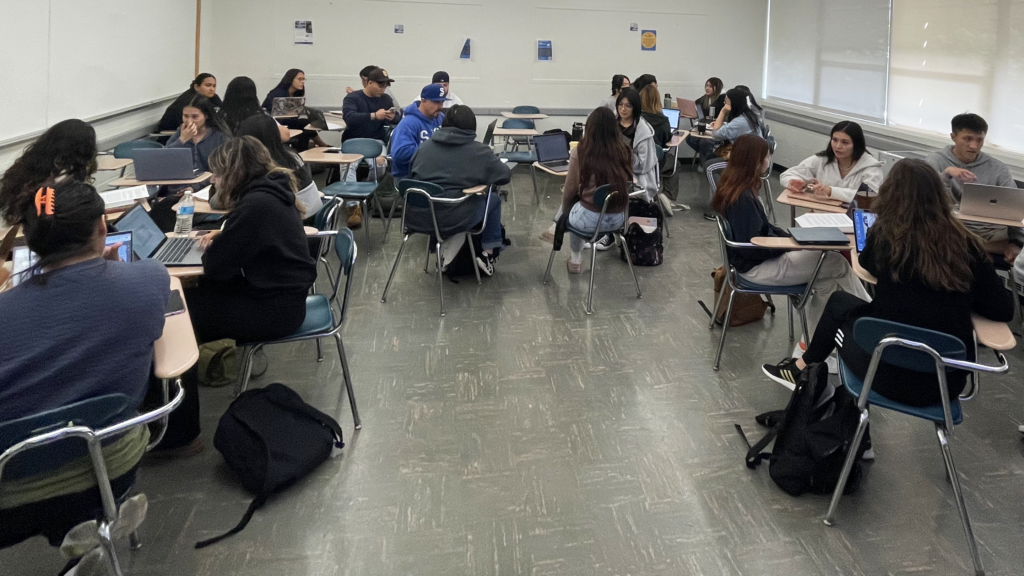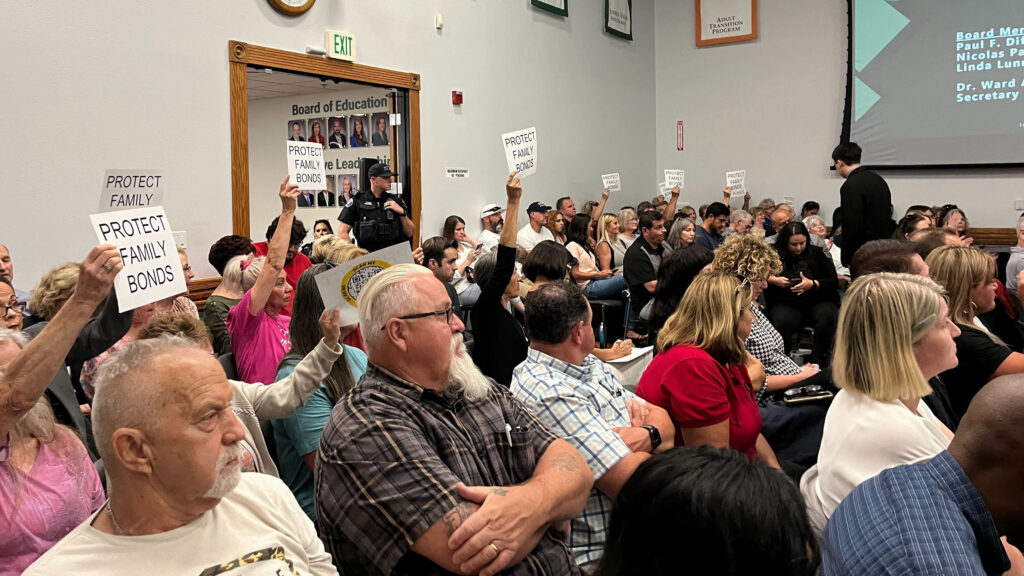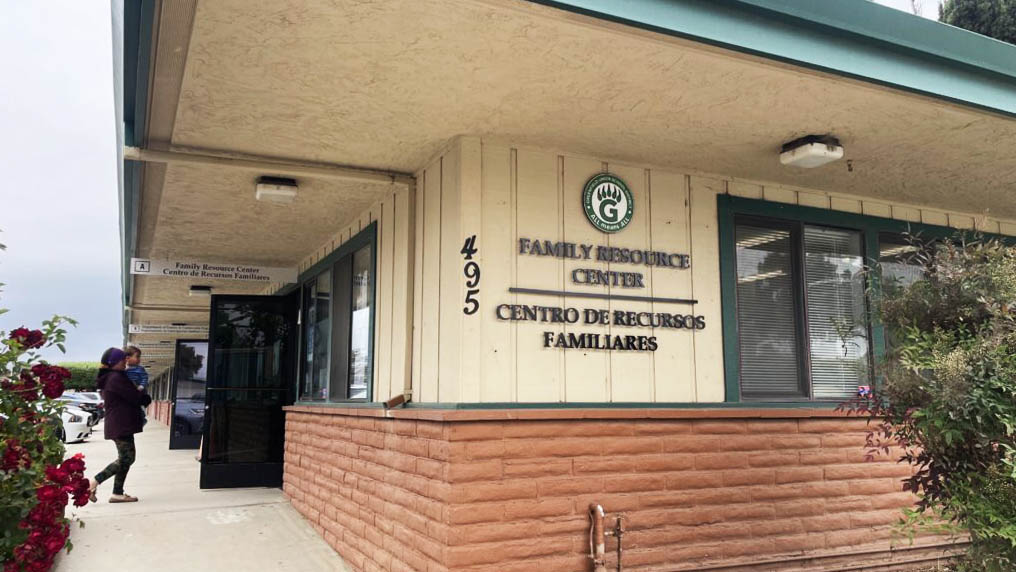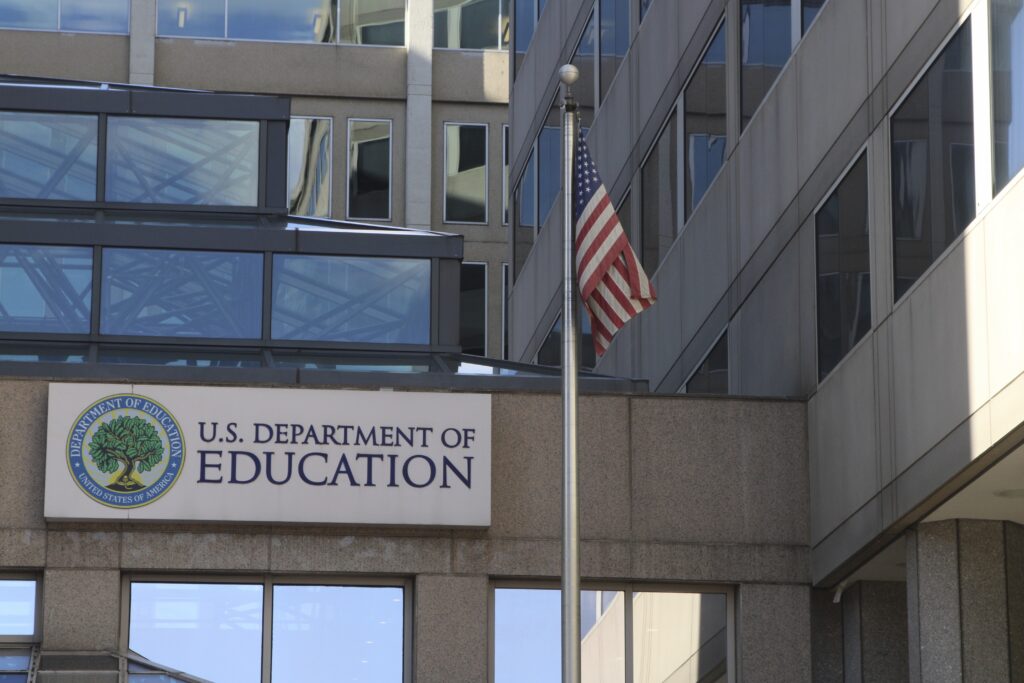
High school students in Monterey County’s Migrant Education Student Academy learn bioengineering from Stanford University students.
Credit: Zaidee Stavely/EdSource
Top Takeaways
- In Monterey County, students brush up on English, math and science to fill gaps caused by moving schools.
- California is suing the Trump administration for withholding funds from the nearly 60-year-old program.
- Many current and former students call the program life-changing.
A group of high school students in Monterey County is spending their summer extracting DNA from sprigs of clover, making jewelry out of algae and shaping ceramic bowls, while also beefing up their math, reading and writing skills.
This Migrant Education Student Academy is one of dozens of federally funded migrant education programs in California that help the children of agricultural workers fill gaps in academic instruction as they move with their parents from job to job.
Fourteen-year-old Omar Flores said the program offers classes that he has never had access to, like ceramics and BioJam, a bioengineering class taught by Stanford University students.
“I like how we get to build with clay, and we get to express our feelings with clay. I like BioJam too because we further our knowledge and look in microscopes. I’ve learned a lot about genes and how we can modify genes,” Flores said.
Educators say Migrant Education Programs help boost students’ academic skills and put them on track for college and careers, which is backed up by some research studies.
But this program and others like it throughout the state may soon disappear. Migrant education is one of five programs for which President Donald Trump withheld federal funds that are usually distributed to states on July 1. California is now suing the Trump administration over the frozen funds, which total about $121 million for migrant education in the state, according to an estimate by the Learning Policy Institute.
The president has proposed eliminating the program in the next fiscal year’s budget, which is yet to be voted on in Congress. In his budget proposal, he implied that it was not in the nation’s interest to prepare migrant education students for college. “These programs have not been proven effective, are extremely costly, and encourage ineligible non-citizens to access U.S. IHEs [institutions of higher education], stripping resources from American students.”
Yet many migrant education students are U.S. citizens. The Migrant Education Program, established almost 60 years ago, serves students whose parents work in agriculture, fishing, dairy or logging, and have moved in the last three years for work, regardless of their immigration status.
Loss of funds would be ‘devastating’
In California, 47,225 students were enrolled in Migrant Education Programs statewide in 2024-25. Monterey County’s program is one of the largest, with 4,328 students in 2024-25, for which it received about $14 million in federal funds. In addition to academic instruction and counseling, many counties also offer health services. San Diego County, for example, brings a mobile dental clinic from USC each year to provide dental cleanings, fillings and other treatment to migrant students.
Monterey County and many others are keeping their programs through the end of the summer, but after that, their future is uncertain. The elimination of the funds would be devastating, said Constantino Silva, senior director of migrant education in Monterey County.
“The support system for the migratory students will not be there,” Silva said. “Hopefully, there’s enough caring people who will still keep these students on their radar, right? But I’m afraid the students will fall through the cracks. I’m worried that only a few will continue to thrive as opposed to many.”
Silva credits the Migrant Education Program with preparing him for college. He was a migrant student himself, after he moved with his family from Mexico to Monterey County when he was 6 so they could be with his father, who moved back and forth for work.
“It made a huge difference for me. By the time I got to high school, I was taking college prep courses, right? I could speak and write in English on a very high level. And my math was great too. So I was propelled into college prep, and then I went to college, and I really credit that to the additional support that I received through the migrant program,” Silva said.
‘I learned a little bit more words here’
Silva’s first school in the U.S. was Santa Lucia Elementary in King City, where on a recent Wednesday, first and second grade migrant education students were learning the sound O makes when it’s before an A. In unison, they read sentences aloud: “They load the boat,” “Goats like to roam,” and ‘The soap will float.”
In another classroom, third and fourth graders practiced the moves for a dance they learned from a visiting teacher from Mexico. Piñatas the students made by hand hung from the ceiling.
Fifth graders discussed a book they were reading, “Radio Man,” about a child in a migrant farm-working family. Teacher Keyla Robles asked them to talk with their classmates about what happened at the beginning of the book, and then what happened in the middle.
Daleysa, 10, said she was excited to read a book about migrant workers like her own family, who travel each year from Yuma, Arizona, to King City. Both of her parents work in the fields, she said.
“I like it a lot because it’s about a boy who moves to different places to get different fruits and vegetables. And it’s kind of like how we do it, but we only go to two different places,” Daleysa said.
Oliver, 10, whose parents work in the lettuce fields, said he learned multiplication and more English during the summer program.
“I learned a little bit more words here,” he said, adding that it has also helped his friends who do not speak fluent English. “It helps them a little bit more than the normal school, because the normal school doesn’t really tell you to repeat those words.”
Their teacher, Robles, is passionate about teaching the children of migratory farmworkers because she was one herself. As a child, her dad worked in Arizona for six months out of the year and in Monterey County the other half. Her family’s constant moves made it hard for her to do well in school or learn English, she said.
“I experienced that big gap,” she said. “It took me years to pass the ELPAC, for example, because I wasn’t having that support that I know that Migrant Ed gives our students.” The ELPAC is the English Language Proficiency Assessments for California, a test that all students who speak a language other than English must take until they are considered proficient in English.

Now, Robles is trying to help fill the gaps she sees in her own migrant education students. “It’s basic phonics, phonemic awareness that as they’re progressing from grade level to grade level, they just go over their head. They never actually get that understanding of basic letter sounds, basic addition, subtraction,” she said.
Robles applied for a job as a full-time migrant resource teacher with the Monterey County Office of Education, but the job was put on hold after federal funding was frozen.
“It’s really disappointing for me,” Robles said. “Because I feel like I have such a big impact on the students.”
Setting students up for success
A few blocks away at Chalone Peaks Middle School, students gushed about how much they learned in the summer migrant education program’s STEM class, putting together hand-cranked light bulbs and building palm-sized radios.
“The Migrant Education Program is different from regular school because it teaches you a lot more,” said 12-year-old Evelyn, who travels back and forth between Yuma, Arizona, and King City every year. “In school, you mostly review stuff. Here in the STEM class, they teach you real science, and you actually do stuff for yourself.”
Clicking through different stations from banda music to talk shows on her new radio, Evelyn said she will “definitely” use it.
High school migrant education students from Monterey County spent a few days at the University of California, Santa Cruz, this summer. Others attended a summer program at California State University, Fresno. Migrant Education Program coordinator Karla Caliz said the program makes it more likely for these students to attend college.
“Many of our students will narrate how it’s life-changing for them,” she said. “We do believe that without programs like these, we would have students who would not be able to access the information or the process to enter [college].”
Jose Perez, the migrant resource teacher for the King City Union School District, said the summer Migrant Education Program helps set students up to succeed during the school year.
“Sometimes we have students who haven’t had any formal education, so they don’t know about social expectations, and this is a good way to teach them norms in the United States, because in the regular setting, during the regular year, these students may be seen as troublemakers or just being defiant, and they just need to learn our system,” Perez said.
It hurts, Perez said, to know the program could end.
“In my experience in this community, even the district itself, they rely on me a lot,” he said. “I don’t see these students having the chances without the migrant education support.”


























